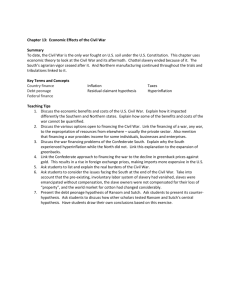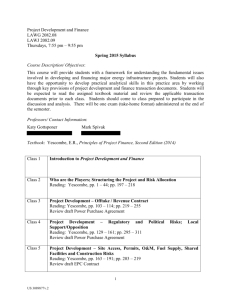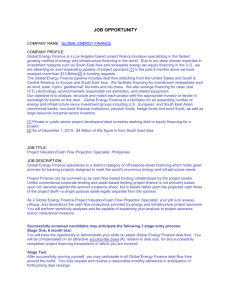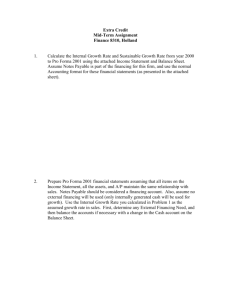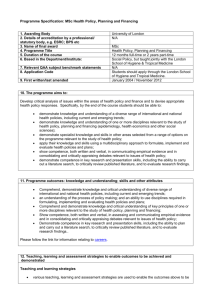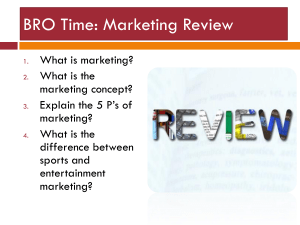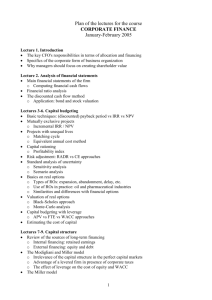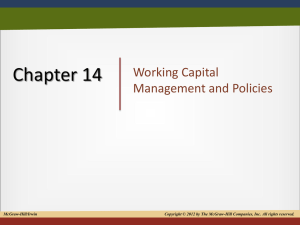Chapter 12 Managing a Small Business
advertisement
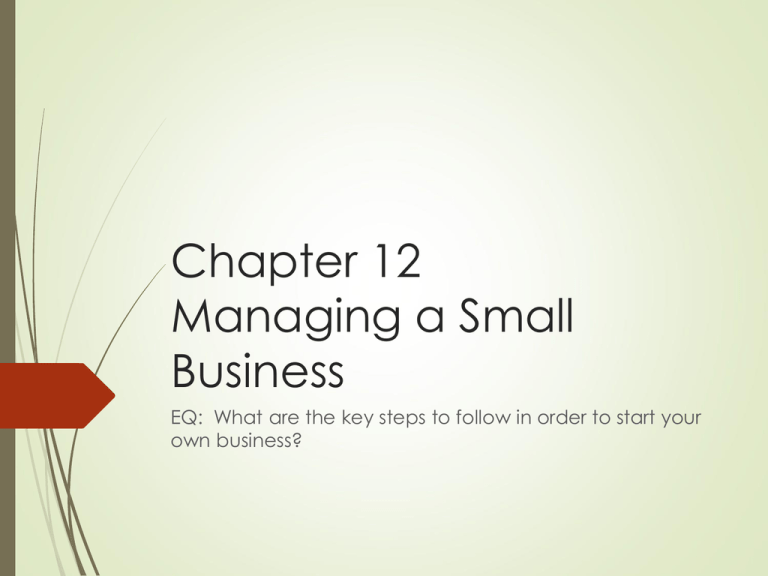
Chapter 12 Managing a Small Business EQ: What are the key steps to follow in order to start your own business? Identifying the Small Business Owner Advantages: independence, control, decision making, setting own schedule Disadvantages: long hours, customer complaints, meeting payroll, taking responsibility for all problems. Small business ownership is risky!!! Identifying the Small Business Owner Fewer than half (less than 50%) of all new businesses will survive for 5 years. Operating a business requires skill in management, finance, marketing, and other business activities. Who Owns Small Businesses Years ago—a majority of small business owners were middle-aged males with less than a college degree. Today, small-business owners are more educated, younger, and more likely to be female or minority New business owners that are women are increasing at a rate 3 times that of men. (30% of all small business owners are female) Who Owns Small Businesses People of non-white ethnic and racial heritage are also a fast growing segment of small business owners. Minority ownership has doubled since the ’80s These groups lack financing, limited management experience, prejudicial treatment by financial institutions, vendors, and other business. Starting a Small Business An Idea + Experience Right Place, Right Time Team Approach Preparation and Research Idea + Experience Ideas come from many sources such as hobbies, interests, and business experiences Books and magazines also suggest ideas. Experience is a key—having the know how to be successful in business. Right Place and Time Retail and restaurant places require good customer traffic Think Whataburger If business is hard to find or not easily accessible, then customers will find alternatives. Starting a business when customer demand is high is also important factor. Team Approach Even small businesses need full and part time employees. Finding the right people is key. Trust Reliability Assistance will also be required from bankers, lawyers, accountants, etc. Preparation and Research Includes having adequate information to make good decisions. Gathering and studying information before starting business will save time and avoid problems. Information needed about customers, competitors, operations, activities, gov’t regulations. What is a Business Plan? A written description of the business idea and how it will be executed, including all major business activities. Used to persuade lenders and investors to finance the venture. Business Plan Elements Description of the Business Competition Customer Analysis Operations Plan Marketing Plan Financial Plan Description of the Business Business Idea Major Products and Services Ownership Structure Strengths Weaknesses Long and Short Term Goals Competition Characteristics of Industry Condition of the Economy Strengths of Competitors Weaknesses of Competitors Customer Analysis Description of Customers Location of Customers Number of Customers Resources (Income) of Customers Sales Forecasts Operations Plan Organization of the Company Chart Description of Major Operations Analysis of Resources Needed Human Resource Plans Marketing Plan Description of Major Marketing Activities Description of Resources Needed Schedule of Marketing Activities Promotions Sales Financial Plans Start Up Costs Short and Long Term Financial Needs Sources of Financing Budgets and Financial Statements Types of Financing Start-Up Financing Short-Term Financing Long-Term Financing Start Up Financing The amount of money needed to open the business. Includes the buildings, equipment, inventory, supplies, licenses, etc. Short Term Financing The money needed to pay for the current operating activities of a business. Obtained for a period of less than a year and often for only one or two months. Long Term Financing Money needed for the important resources of a business Examples: land, buildings, and equipment. Usually require large amounts of money and will be paid over a number of years. Chapter 12 Assignment Review Your Reading (1-7) Page 166 Develop Your Business Language (13-16) Page 167



